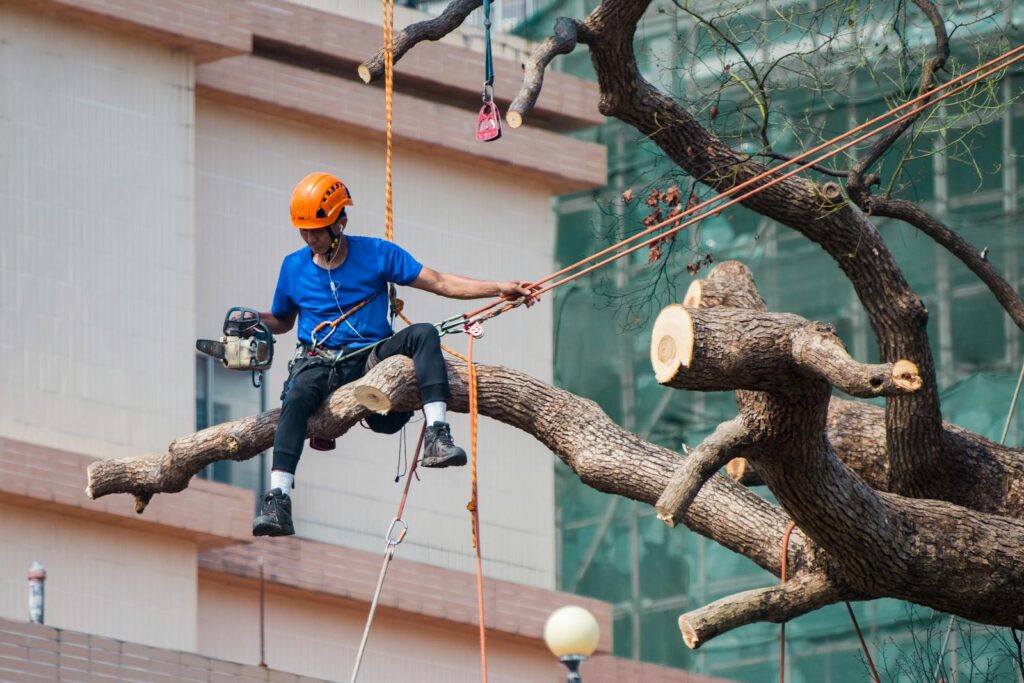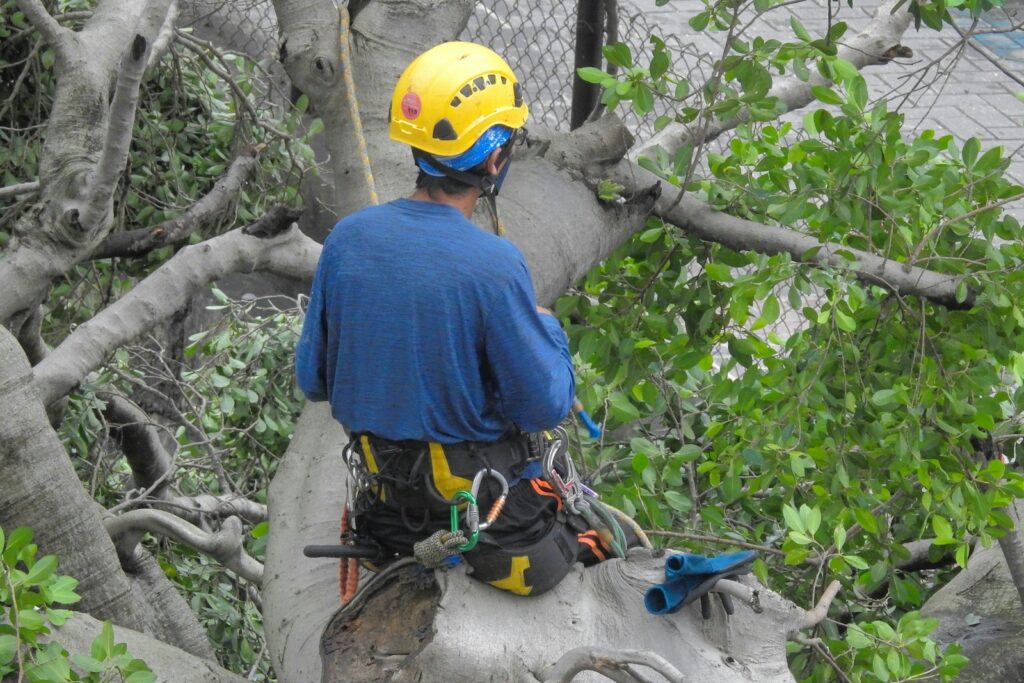Tree Cutting Cost Guide Malaysia 2025/2026: What Affects the Price & How to Save
Looking for a fair, safe Tree Cutting Service in Malaysia? This guide explains how arborists in KL, Selangor, Putrajaya, Nilai and Melaka price jobs, when councils require permission, and what you can do to keep costs down—without compromising safety.
Quick Answer: What Most Homeowners Pay
If you’re planning to potong pokok or remove a tree, here’s a planning-only snapshot based on recent EcoTrim jobs across urban Malaysia (terrace houses, corner lots, small commercial). These are non-binding, site-dependent bands:
- Small tree/major limb (≤15 ft/≤200 mm dia, easy access): typically a low 3-figure RM once debris limits are agreed.
- Medium tree (15–30 ft/200–350 mm): high 3-figure to low 4-figure RM depending on rigging and haul-out route.
- Large/complex (>30 ft or near structures): mid 4-figure RM; high-risk or night works can exceed this.
- Stump grinding: often mid 3-figure RM per stump for 300–450 mm; larger or root-heave cases cost more.
Important: These aren’t quotes. Final pricing requires an on-site risk assessment (tree health, fall zone, utilities, access, traffic).

How Pricing Works for a Tree Cutting Service
Tree work is not a commodity. An experienced crew prices the task + risk + logistics, not just height:
- Labour: certified climber, ground crew, qualified supervisor.
- Equipment: rigging lines, lowering devices, chipper, stump grinder, MEWP (boom lift) where lanes allow.
- Risk & compliance: electrical clearance, road cones/signage, method statements, insurance.
- Waste handling: chipping on site vs haul-away; green waste tipping.
- Admin: permit applications where required, traffic management plans.
In short: precision tree service work (controlled dismantling, “piece-by-piece” takedown) costs more than a simple straight fell, but it protects roofs, cars and neighbours’ walls.
Key Cost Drivers (with examples)
- Tree size & diameter — Height matters, but stem diameter and limb structure dictate rigging time.
- Species & wood density — Mahogany and Angsana are denser than young Cassia; heavier sections = slower lower-downs.
- Condition — Dead or storm-damaged wood is unpredictable; requires smaller cuts and extra taglines.
- Proximity to structures — Terrace houses in PJ/KL typically allow no drop zone; expect “piece-by-piece” dismantling.
- Power lines — Any encroachment into utility clearances triggers extra controls or a utility shutdown. Do not DIY near cables; contact TNB.
- Access — Can we get a chipper or grinder to the gate? Is the lane too narrow to set a MEWP?
- Traffic management — Busy Shah Alam cul-de-sacs may need cones/flagmen during school run; some councils require formal permits for lane closures.
- Clean-up scope — Logs left on site vs hauled away; fine raking; stump grinding depth (commonly 150–200 mm below grade for lawns).
- Timing — Emergency night callouts (after storms) cost more; inter-monsoon rain may delay cuts for safety.
- Permits/approvals — Protected or roadside trees may need council consent; DBKL/MBPP publish checklists for certain applications (details vary).
Typical Price Bands (Planning Guide, Not a Quote)
* Not a quote. Pricing set only after on-site assessment.
Do You Need Council Permission?
Rules vary by council and by whether the tree is on private land, a development site, a road reserve, or listed as protected. Two examples to show the kind of paperwork councils ask for:
- DBKL (Kuala Lumpur) — Has an OSC (One-Stop Centre) checklist for “Permohonan Penebangan/Pengalihan/Cantasan Pokok Rendang (PPP)” which can require a tree conservation/landscape report by a qualified arborist.
- MBPP (Penang) — Publishes an application checklist for “Kebenaran Merancang bagi Penebangan Pokok”, including tree inventory, circumference at 0.5 m, photos and plans.
Plain note for KL/PJ homeowners: Street trees, roadside reserves or heritage/protected species often cannot be removed without approval. Always check your PBT (local council) first. For general maintenance standards, Malaysia’s Jabatan Landskap Negara issues national guidance on tree care and preservation.
Cut vs Trim vs Prune vs Grind (What’s the Difference?)
- Cut/Removal (tebang pokok): Full dismantle to ground level, often rigged down in sections.
- Trim: Light shaping; aesthetic.
- Prune (memangkas): Targeted cuts for health/safety (deadwood, clearance above roof/drive).
- Stump grinding: Separate task; grinds stump and major roots below grade.
Comparison Table: Removal, Pruning, Stump Grinding, DIY
| Option | Best For | Risk Level | Typical Cost Level | Notes |
|---|---|---|---|---|
| Removal | Dead/dangerous, wrong species/location | High | $$$–$$$$ | Requires rigging, traffic controls, full clean-up |
| Pruning | Clearance, health, wind-load balance | Medium | $$–$$$ | Use three-cut method; avoid flush cuts |
| Stump Grinding | Trip hazards, replanting | Medium | $$ | Depth typically agreed (~150–200 mm); utilities check first |
| DIY Light Prune | Small branch (<100 mm) away from cables | Low–Medium | $ | Stop if ladders near power lines; call TNB/your arborist |
When to Hire a Pro (and When to Wait)
Hire a professional Tree Cutting Service when you have:
- Cables nearby, tight drop zones, or decay/cracks.
- Large leaders over roofs/canopies in terrace lanes.
- Storm damage or uprooting/root heave.
- Any council/permit uncertainty (we’ll help you ask the right questions).
When to wait: during heavy rain or strong winds. Good crews will postpone for safety and to protect your neighbour’s roofs and cars.
Safety Near Power Lines
Never attempt to prune or remove a tree near overhead lines. Keep clear, don’t touch branches near wiring and contact TNB (15454) for guidance or shutdown coordination.
Access & Traffic Management in Terrace Streets
In PJ/KL terrace areas, crew trucks may block a lane. Expect cones and spotters; some closures require permits. DBKL runs e-PLAB for road-related permits—useful context when planning complex works.
Pruning a Small Branch Safely (Under 100 mm, Ground-Based)
For small, reachable branches only—if ladders, power lines, cracked wood or big diameters are involved, hire a pro.
- Plan the cut: Identify the branch collar (swollen base). Don’t cut flush to the trunk.
- Three-cut method:
- Undercut 150 mm from the collar (about ⅓ depth).
- Second cut from the top, 50–80 mm further out to remove branch weight.
- Final cut just outside the collar to leave a small, clean stub for natural sealing.
- Tooling: Sharp handsaw or lopper, eye protection, gloves.
- Clean-up: Chip/mulch if possible; avoid blocking drains.
- Stop signs: Any tensioned wood, split bark, ants/termite cavities, or branches near live cables → call an arborist/TNB.
Common Mistakes That Raise Your Bill
- Calling after a storm only (peak demand = surge pricing).
- Not clearing access (parked cars, locked side gates).
- DIY ladders near cables (job escalates to utility coordination).
- Insisting on “flush cuts” (creates decay; future corrective work).
- Skipping stump grinding where regrowth is aggressive (e.g., Rain Tree).
- Hiding the real scope (extra green waste on the day = extra trips).
- No contact for neighbours (blocked drives = delays).
- Chasing the cheapest only (no insurance, no rigging plan).
Why EcoTrim
We’re a local crew serving KL, Selangor, Putrajaya, Nilai, Shah Alam, Kuala Selangor and Melaka. Our Tree Cutting Service is led by senior arborists and trained climbers. What you can expect:
- Safety-first rigging and the right method for your site.
- Transparent pricing with scope written down (cuts, haul-out, stump depth).
- Full service: tree cutting, pruning, stump grinding, garden clean-ups.
- Insurance and method statements for higher-risk jobs.
- Fast WhatsApp booking: +60 11-1689 3307.
Explore our full tree services, or compare methods in our removal vs trimming vs pruning guide.
Service Areas & Response Times
From Kuala Lumpur condos to Shah Alam corner lots and Melaka link houses, we plan around school-run traffic and inter-monsoon rain. See our service areas for coverage and typical response times.
Summary
- Costs vary with size, access, utilities and clean-up—site visit = price.
- Permits differ by council; some require arborist reports and inventories.
- Never DIY near power lines—contact TNB first.
- Pruning ≠ removal—choose the right method to save money and the tree.
- WhatsApp us for a safe plan and clear scope: +60 11-1689 3307.
FAQs:
1) What’s the fastest way to lower my quote?
Answer: Clear access (move cars; unlock side gates), decide debris plan (chip/haul vs leave logs), and share clear photos + a pin before the site visit. Avoid peak storm days when crews are fully booked.
2) Do I need a permit to cut a tree on my own land?
Answer: It depends on your council and the tree. Some councils require approvals or an arborist report for certain trees, especially on road reserves or development sites. Check DBKL/MBPP examples and verify with your PBT.
3) Can you work during rain?
Answer: Light drizzle may be fine; wind and heavy rain = postpone for safety and to protect roofs/fences. Expect delays after storms.
4) Is stump grinding included?
Answer: Not by default. It’s a separate line item with an agreed depth (often 150–200 mm). It may be essential where regrowth or re-paving is planned.
5) What about trees near power lines?
Answer: Don’t attempt it. Keep clear and contact TNB (15454) for guidance or shutdown. We coordinate our method to meet utility safety.

Leave a Comment
Required fields are marked *